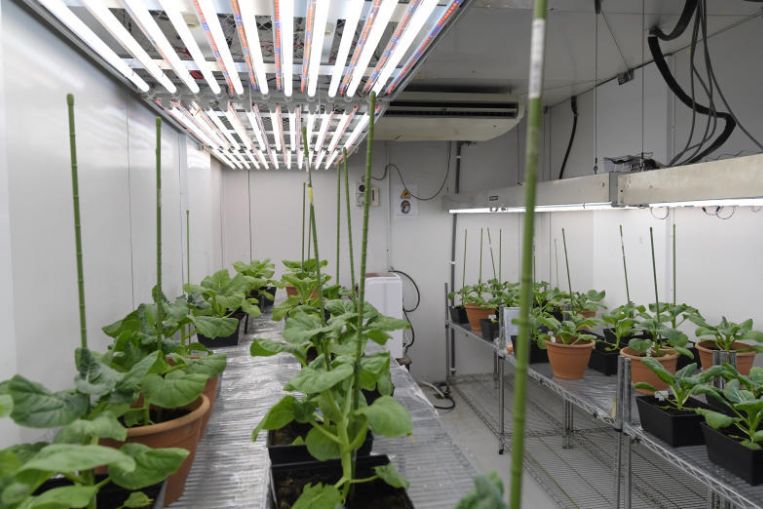In a quiet corner of the National University of Singapore (NUS), scientists are creating the next generation of supercrops that can survive drought and withstand high temperatures.
To make urban farming a success in land-scarce Singapore, crops must be climate-resilient, disease-resistant and able to grow well in low light intensity. To develop these traits in crops, their genes must be enhanced.
Scientists in Singapore have invented a novel nanotube carrier that can be absorbed by the leaf to transform the genes in a cell component at a faster rate.
Depending on the DNA inserted into the carrier, it can improve the crop’s traits and resistance to disease. Since the carrier targets only the leaf’s chloroplast – the component that enables photosynthesis – and not the nucleus, the crop’s natural hereditary genetics are not altered.
Currently, scientists use gene guns to shoot DNA into leaves. This damages the leaves and may not target the correct gene. With the carrier’s accuracy in targeting the chloroplast, gene transformation is faster, allowing crops to develop the desired traits quickly.
The nanotube carrier was developed by scientists at the Singapore-MIT Alliance for Research and Technology (Smart) at the Campus for Research Excellence And Technological Enterprise (Create) in NUS.
The nanotubes can successfully reach chloroplasts in species such as spinach, watercress, and arugula.
Smart will work with Temasek Life Sciences Laboratory (TLL) to decide on the specific genes that should be transformed for each crop. Smart and TLL’s research complements the early high-tech farming here to make Singapore self-sufficient in producing high-quality vegetables.
TLL also created the hardy, locally grown, climate-resistant Temasek Rice that hit stores in 2016.
Since 2017, a research team in TLL has been carrying out a vegetable breeding programme in its quest to produce batches of crops that grow optimally in indoor farming conditions such as low light intensity.
 Through gene editing using a new nanotube carrier, researchers are transforming a particular DNA in crops so that they will produce bigger leaves and grow well in less light. (Image Credit: ALPHONSUS CHERN
Through gene editing using a new nanotube carrier, researchers are transforming a particular DNA in crops so that they will produce bigger leaves and grow well in less light. (Image Credit: ALPHONSUS CHERN
For instance, as stacks of LED lights in vertical farms are costly, farmers tend not to maximize the lights’ brightness to save on utility bills. Under lower light intensity, choy sum plants have smaller leaves and longer stems to reach the light source.
Through gene editing, TLL researchers are transforming a particular DNA in the vegetables so that they will produce bigger leaves and grow well in less light.
This programme will take a few years to produce high-performing crops, as cross-breeding generations of crops take time. It takes three to four months for a choy sum plant to flower and produces seeds.